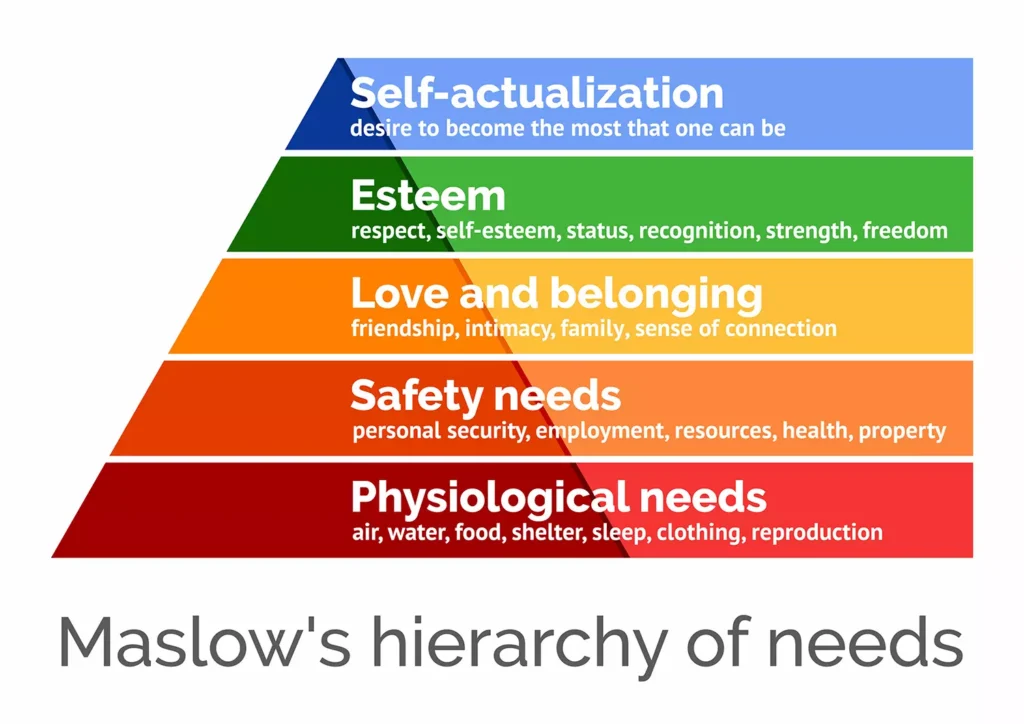We’re now at a critical point for employee engagement and DEI. Although quit rates have steadily declined from their 2021 highs, there are complicating factors that have led to historically low motivation among workers. These include, but are not limited to:
- Mass layoffs (especially in the tech industry)
- Increasing feelings of loneliness and isolation
- Lack of career growth and career development opportunities
Staring at big data may make this easy to forget, but workers are still human with all the trappings that come with that. We all have a set of needs, and we’re all driven to have those needs met. As people increasingly work from home, they’re also looking to their employer as their source of community and belonging.
We’ve identified 3 important mentoring trends for 2023:
2) Establishing Authentic Connections
3) Creating DEI-Centered Spaces
Each of these trends will work together as a holistic strategy to boost employee engagement. Diversity, equity, and inclusion will be particularly important in 2023 and beyond, especially as new cohorts of Gen Z workers graduate with the expectation that DEI will play a large part in their organization’s DNA.
The Theatrics of Fitting In
Organizations have historically ignored culture. Or, to put it more precisely, have either explicitly or implicitly required adherence and alignment with the company’s majority culture. Such an alignment is a logical one. When everyone is on the same page, they’re more likely to cooperate as a team and meet goals.
The issue, however, is that a focus on a single majority culture is not needed for team alignment toward shared goals. Many employees feel uncomfortable with the established team culture when that culture is exclusive or toxic. This has been particularly true for women when the team culture is overly masculine. It’s also been true of ethnic and cultural minorities who are more likely to experience microaggressions.
One black worker quoted in a 2012 Harvard Business Review article summed this up powerfully:
“The corporation for me is a theater, and I try to remember to stay in character.”
We know what you’re thinking here. “2012? That was over a decade ago. Surely, times have changed!”
Yes and no.
It’s true that 60% of companies now have some kind of DEI initiative in place. But there’s a large disconnect between what employers and employees think is effective DEI. The British software company Advanced discovered that just 25% of individuals aged 18-24 think their company is properly handling DEI, compared to 45% of those in senior roles.
Consequently, a Josh Bersin study found that 80% of companies are “going through the motions” with DEI and not effectively keeping themselves accountable.
Let that sink in for a minute. It appears the “theatrics of fitting in” don’t just apply to workers trying to align themselves with a majority culture at work that doesn’t recognize their individual value. It appears companies are also engaging in their own form of theatrics as far as how they’re handling DEI.
Workers see those theatrics. They’re also responding by disengaging from the day-to-day, putting in less effort, and biding their time until they can quit for a job that offers more authentic, structured, and accountable DEI.
Maslow’s Hierarchy of Needs Is Instructive for DEI
The idea that companies must concern themselves with the emotional and social needs of their workers may sound scary to some. But the lack of DEI-centered spaces that take into account this need is increasingly one of the primary reasons workers either disengage or quit. The data is pretty stark here. One GoodHire survey, for example, found that 81% of people would quit if their employer didn’t support DEI.
A refresher on psychology may help paint the picture for company decision-makers. Maslow’s hierarchy of needs helps explain just why workers are placing so much emphasis on their personal well-being through self-selected communities at work:

There are many different ways this chart is chopped up, but it effectively spells it out this way:
- The lower the need is on the hierarchy, the most important it is that that need be satisfied
- Once a need is satisfied, individuals have more emotional and mental energy to put toward the other needs
For working adults, employment plays a central role in satisfying these needs.
- Physiological and Safety needs are met through compensation and benefits (e..g., salary, health insurance, retirement benefits, etc.).
- Love and Belonging are met through employee engagement programs, especially DEI initiatives such as Employee Resource Groups and targeted mentoring programs.
- Esteem is met through growth-centered programs, including career development, skill development, and career pathing.
- Self-Actualization is met when workers see the fruit of their labors: promotions, raises, bonuses, and praise.
Earning a living wage has long been the purview of employers in almost every society throughout world history. However, the need for employers to take a leading role in love and belonging is a modern development. It follows with multiple points of data that show people are having a harder time connecting to others.
In the US, the number of people who state that they don’t have a single close friend has increased by 400% in the past 3 decades.
Use this simple word-based equation: When people are unhappy and lonely at work, they’re less likely to be productive. And because Love and Belonging is a more pressing need than even Esteem and Self-Actualization, employees who don’t have that need met are more likely to disengage and eventually quit.
How to Ramp Up DEI-Centered Spaces in 2023
First, it may be necessary to iterate this point: You’re probably not to blame if your employees are struggling with feeling lost and lonely.
We’re in the midst of cultural and societal changes completely beyond your control. As people find themselves lacking connection and meaning outside of work, they’re increasingly turning to their employers to fill that gap.
That said, although you’re likely not at fault, your organization will need to respond in ways that support this need. The process starts like this:
- Survey your people. Learn what kind of diversity, equity, and inclusion needs people want to see at your organization.
- Audit your existing DEI landscape. Once you know what your employees want, examine what you currently offer. Note that as you audit your DEI landscape, you may uncover organic and unstructured DEI-centered spaces that already exist. Employees often create these spaces for themselves using available company resources, such as internal chat systems.
- Formalize DEI. Once you have identified what your employees want or need, and what already exists, formalize your DEI approach by creating structured and highly visible spaces that meet those needs. If informal spaces exist, invite those individuals and leaders to take part in formalized alternatives, such as ERGs and mentoring programs. (Note: If informal DEI-centered spaces exist, avoid dismantling them in favor of your own. Instead, create those formal spaces and create incentives for participation.)
Every year, mentoring trends are driven primarily by the needs of employees. In 2023, DEI-centered spaces are going to be critical for boosting employee engagement. When you formalize your approach with structured programs, you give yourself a better foundation for success. Just don’t forget to advertise or market those programs to help close that information gap between what you offer, and what employees know is available to them.




